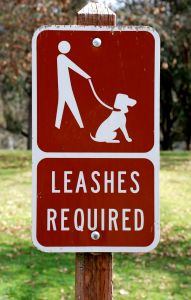 How to Get a Dog to Stop Grabbing the Leash on a Walk- Reader Question
How to Get a Dog to Stop Grabbing the Leash on a Walk- Reader Question
The following is a question from one of our readers:
How to Get a Dog to Stop Grabbing the Leash on a Walk- The Video
How to get a dog to stop grabbing the leash on a walk on Youtube
How to Get a Dog to Stop Grabbing the Leash on a Walk- Key Tips
There are a few key points to consider in order to get your dog to stop grabbing the leash on a walk:
- What type of training collar are you using? If you are using a flat collar, slip collar, or harness then those aren’t going to help you get over this problem. I’d recommend using a pinch collar or a prong collar.
- I’m guessing that she is grabbing the leash and, with the positioning of your hands, you are likely just playing a tug-of-war with her rather than actually correcting her. When she grabs the leash quickly reposition your hands so that you are grabbing the leash next to her neck rather than further away.
- Holding a dog down nearly never works for calming a dog. It typically just riles a dog up. Avoid this technique for any behavior problem.
Remember that the mark of an effective correction is that it will change behavior now and change behavior in the future. If you are continually correcting and seeing nothing for your labors it means that your corrections are not the right style, firmness, timing, etc. for your dog. Change the training collar and change the positioning of your hands and I think you’ll be in great shape.



Follow Us!